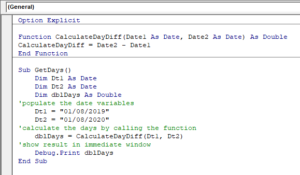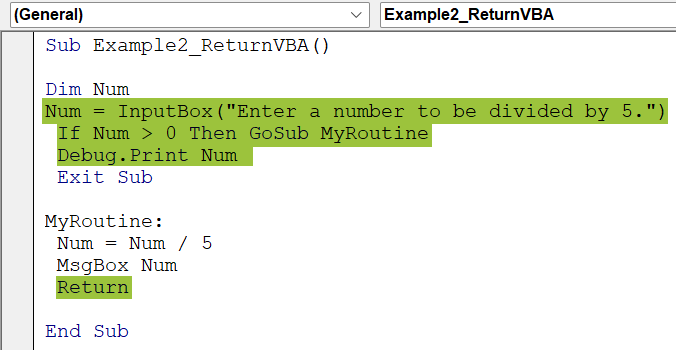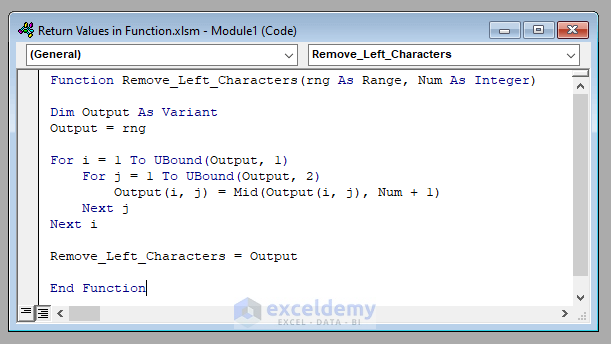
In VBA (Visual Basic for Applications), a function is a block of code that can be called multiple times from different parts of your program. Unlike a subroutine, a function can return a value to the calling code. In this article, we will explore five ways to create VBA functions with return values.
VBA functions are used to perform a specific task and return a value to the calling procedure. They are useful for encapsulating code that needs to be executed repeatedly, making your program more modular and easier to maintain. By using functions, you can avoid duplicating code and make your program more efficient.
In this article, we will cover five ways to create VBA functions with return values. We will start with the basics and then move on to more advanced techniques.
What is a VBA Function?
Before we dive into creating VBA functions, let's first understand what a function is. A function is a block of code that can be called multiple times from different parts of your program. It is a self-contained piece of code that performs a specific task and returns a value to the calling code.
In VBA, a function is defined using the Function keyword followed by the name of the function and a pair of parentheses. The function can take arguments, which are values passed to the function when it is called. The function can also return a value, which is the result of the function's execution.
Basic VBA Function
Here is an example of a basic VBA function that takes two arguments and returns their sum:
Function AddNumbers(num1 As Integer, num2 As Integer) As Integer
AddNumbers = num1 + num2
End Function
This function takes two integer arguments, num1 and num2, and returns their sum. The As Integer keyword specifies the data type of the function's return value.
To call this function, you would use the following code:
Sub TestAddNumbers()
Dim result As Integer
result = AddNumbers(2, 3)
MsgBox result
End Sub
This code calls the AddNumbers function with the arguments 2 and 3, and stores the result in the result variable. The MsgBox statement then displays the result.
1. Creating a VBA Function with a Return Type
When creating a VBA function, you need to specify the return type of the function. The return type is the data type of the value that the function returns. VBA supports a wide range of data types, including integers, strings, dates, and more.
Here is an example of a VBA function that returns a string:
Function Greet(name As String) As String
Greet = "Hello, " & name & "!"
End Function
This function takes a string argument name and returns a greeting message.
To call this function, you would use the following code:
Sub TestGreet()
Dim message As String
message = Greet("John")
MsgBox message
End Sub
This code calls the Greet function with the argument "John", and stores the result in the message variable. The MsgBox statement then displays the result.
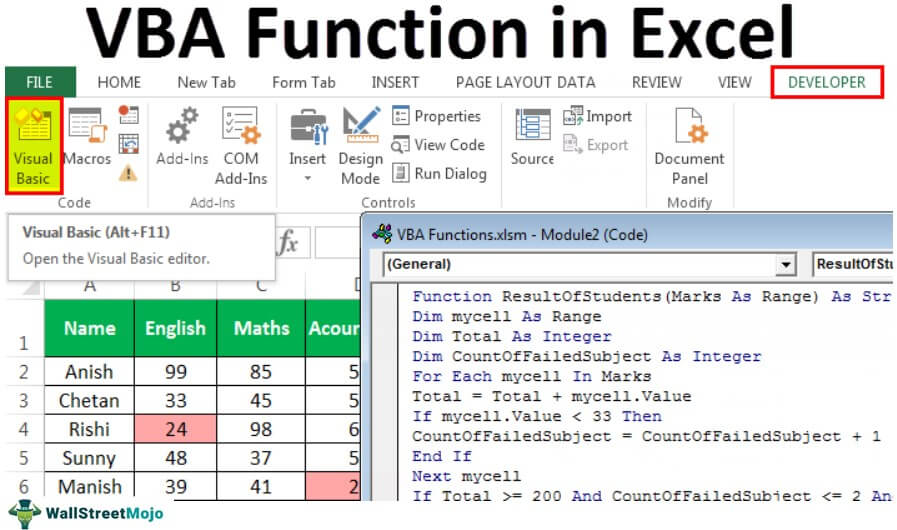
2. Creating a VBA Function with Multiple Return Values
In VBA, a function can return only one value. However, you can use a technique called "returning multiple values" to return multiple values from a function. One way to do this is by using an array or a collection.
Here is an example of a VBA function that returns multiple values using an array:
Function GetScores() As Variant
Dim scores(1 To 5) As Integer
scores(1) = 10
scores(2) = 20
scores(3) = 30
scores(4) = 40
scores(5) = 50
GetScores = scores
End Function
This function returns an array of five integers.
To call this function, you would use the following code:
Sub TestGetScores()
Dim scores As Variant
scores = GetScores()
MsgBox scores(1)
MsgBox scores(2)
MsgBox scores(3)
MsgBox scores(4)
MsgBox scores(5)
End Sub
This code calls the GetScores function and stores the result in the scores variable. The MsgBox statements then display each element of the array.
3. Creating a VBA Function with Optional Arguments
In VBA, you can create functions with optional arguments. An optional argument is an argument that can be omitted when calling the function.
Here is an example of a VBA function with an optional argument:
Function Greet(name As String, Optional title As String = "") As String
If title <> "" Then
Greet = "Hello, " & title & " " & name & "!"
Else
Greet = "Hello, " & name & "!"
End If
End Function
This function takes a required string argument name and an optional string argument title.
To call this function, you would use the following code:
Sub TestGreet()
Dim message As String
message = Greet("John")
MsgBox message
message = Greet("John", "Mr.")
MsgBox message
End Sub
This code calls the Greet function with the argument "John" and then with the arguments "John" and "Mr.".
4. Creating a VBA Function with a Variable Number of Arguments
In VBA, you can create functions with a variable number of arguments using the ParamArray keyword.
Here is an example of a VBA function with a variable number of arguments:
Function SumNumbers(ParamArray numbers() As Variant) As Double
Dim total As Double
total = 0
Dim i As Integer
For i = LBound(numbers) To UBound(numbers)
total = total + numbers(i)
Next i
SumNumbers = total
End Function
This function takes a variable number of arguments and returns their sum.
To call this function, you would use the following code:
Sub TestSumNumbers()
Dim result As Double
result = SumNumbers(1, 2, 3, 4, 5)
MsgBox result
result = SumNumbers(10, 20, 30)
MsgBox result
End Sub
This code calls the SumNumbers function with the arguments 1, 2, 3, 4, 5 and then with the arguments 10, 20, 30.
5. Creating a VBA Function with a Return Type of Object
In VBA, you can create functions that return objects. An object is a complex data type that can have properties and methods.
Here is an example of a VBA function that returns an object:
Function CreatePerson(name As String, age As Integer) As Object
Dim person As Object
Set person = CreateObject("Scripting.Dictionary")
person.Add "Name", name
person.Add "Age", age
Set CreatePerson = person
End Function
This function creates a new object with the properties Name and Age.
To call this function, you would use the following code:
Sub TestCreatePerson()
Dim person As Object
Set person = CreatePerson("John", 30)
MsgBox person("Name")
MsgBox person("Age")
End Sub
This code calls the CreatePerson function and stores the result in the person variable. The MsgBox statements then display the properties of the object.
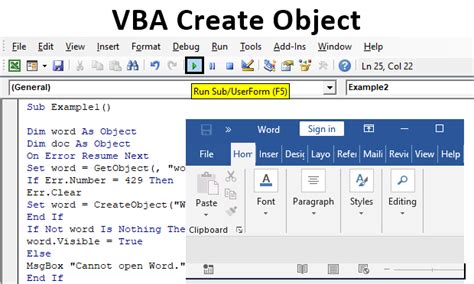
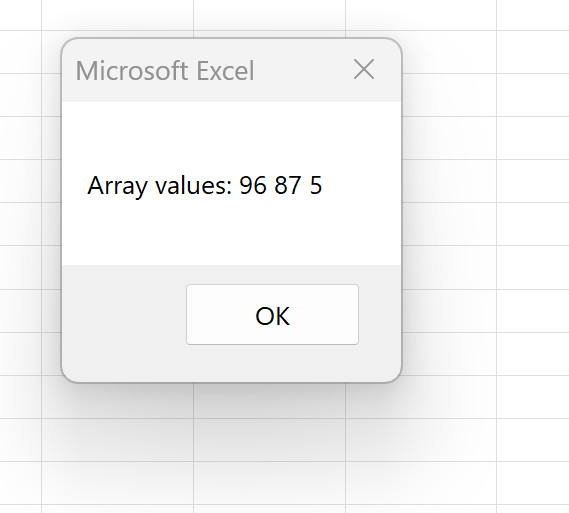
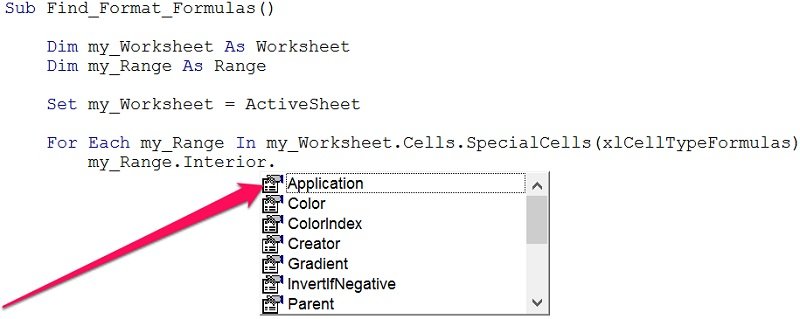

Conclusion:
In this article, we have explored five ways to create VBA functions with return values. We have seen how to create functions with a return type, multiple return values, optional arguments, a variable number of arguments, and a return type of object. By using these techniques, you can create powerful and flexible VBA functions that can be used to perform a wide range of tasks.
We hope this article has been helpful in your VBA programming journey. If you have any questions or need further clarification, please don't hesitate to ask.
FAQs:
What is a VBA function?
+A VBA function is a block of code that can be called multiple times from different parts of your program. It is a self-contained piece of code that performs a specific task and returns a value to the calling code.
How do I create a VBA function with a return type?
+To create a VBA function with a return type, you need to specify the return type of the function using the `As` keyword followed by the data type of the return value.









